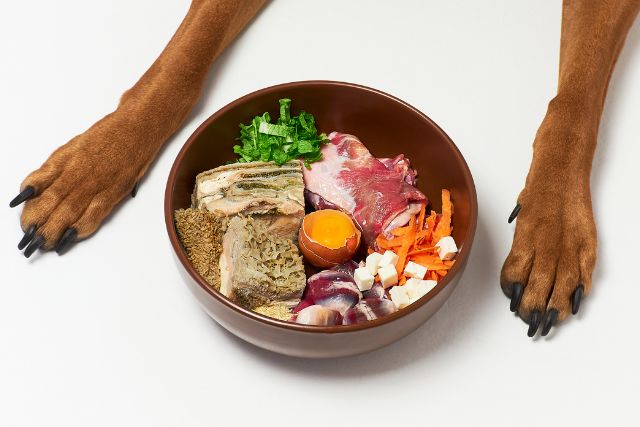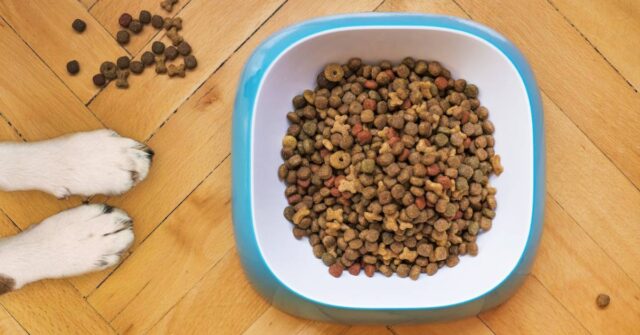Welcome to our ultimate guide on homemade dog treats, tailored especially for our Australian readers!
This post is dedicated to all dog lovers looking to provide healthier, tastier, and safer treat options for their furry friends.
We’ll explore a variety of recipes, discuss safe ingredients, and even dive into the benefits of using Australian-sourced produce.
So, let’s get started on this journey to enhance your dog’s diet with some homemade goodness.
Introduction to Homemade Dog Treats
Making homemade dog treats is not only a fun activity but also a way to ensure your dog’s treats are healthy and free from unwanted additives.
This section will introduce you to the world of homemade dog treats, highlighting the benefits and essential nutritional information.


The Benefits of Making Your Own Dog Treats
Homemade dog treats come with a myriad of benefits. You have complete control over the ingredients, which is particularly important for dogs with allergies or specific dietary needs
Moreover, homemade treats can be more cost-effective and environmentally friendly, especially when using locally sourced ingredients.
Understanding Your Dog’s Nutritional Needs
Before you start baking, it’s crucial to understand your dog’s nutritional requirements.
Dogs need a balanced diet that includes proteins, carbohydrates, fats, vitamins, and minerals. While treats should not constitute the majority of their diet, they should still offer some nutritional value.
Ingredients to Use and Avoid
Selecting the right ingredients is key to making healthy dog treats. This section will guide you on what to include and what to steer clear of to ensure your treats are both delicious and safe.
Safe and Healthy Ingredients
Many everyday kitchen ingredients are safe for dogs and can be used in your recipes.
These include lean meats, certain fruits like apples (without seeds), vegetables like carrots, and grains like oats. Always choose fresh, high-quality ingredients for the best results.
Ingredients to Avoid for Dog Safety
Some common foods are harmful to dogs. Avoid using chocolate, grapes, onions, garlic, avocado, and anything containing xylitol, a sweetener found in many sugar-free products.
It’s always best to consult a vet if you’re unsure about an ingredient.


Basic Homemade Dog Treat Recipes
Now that we know what ingredients are safe, let’s start with some basic recipes that are easy to make and sure to be a hit with your pup.
Simple Biscuit Recipe for Beginners
This easy recipe involves mixing whole wheat flour, oats, and lean chicken broth to create a simple dough. Roll out the dough, cut into shapes, and bake until crisp.
These biscuits are not only tasty but also provide a good source of fibre and protein.


Meat-Based Treats for Protein Boost
For a protein-rich treat, try making jerky using lean meats like chicken or kangaroo. Simply slice the meat thinly, and bake at a low temperature until dry.
These treats are perfect for dogs who need a higher protein diet.
Special Diet Treats
Every dog is unique, and some may require special dietary considerations. Here are some recipes for dogs with specific needs.
Grain-Free Options for Sensitive Stomachs
For dogs with grain sensitivities, you can create treats using ingredients like chickpea flour, pumpkin, and peanut butter. These treats are not only grain-free but also packed with nutrients and flavour.
Low-Fat Recipes for Weight Management
If your dog is on a weight management plan, try making treats using low-fat ingredients like cottage cheese, pureed veggies, and lean meats.
These treats can help maintain a healthy weight without sacrificing flavour.
Australian-Sourced Ingredients
Using local Australian ingredients can be a great way to support local farmers and reduce your carbon footprint. This section explores how to incorporate these ingredients into your dog treat recipes.
Utilizing Local Australian Produce
Australia offers a variety of quality produce that can be used in dog treats. Consider using locally sourced honey for sweetness, kangaroo meat for protein, or fresh Australian-grown veggies.
These ingredients not only support local businesses but also ensure freshness.
Organic and Sustainable Ingredient Options
Opting for organic and sustainable ingredients is beneficial for your dog’s health and the environment. Look for certified organic meats and vegetables, and choose sustainable options whenever possible.


Seasonal Treat Ideas
Seasonal treats are a great way to provide variety in your dog’s diet and make use of seasonal produce. Here are some ideas for treats that suit different times of the year.
Summer Refreshers: Frozen Treats
In the hot Australian summer, frozen treats can be a refreshing delight for your dog. Try freezing a mix of yogurt and fresh fruits like blueberries or bananas for a cool and healthy snack.
Winter Warmers: Hearty and Healthy
During the colder months, offer your dog some warm comfort with treats made from ingredients like sweet potato, chicken, and a touch of cinnamon.
These treats are not only warming but also provide essential nutrients.
Fun and Creative Treats
Making dog treats can also be a fun and creative process. Let’s explore some ideas for treats that are as enjoyable to make as they are for your dog to eat.


Decorative Treats for Special Occasions
For special occasions like your dog’s birthday, try making decorative treats. Use safe, natural food colouring and moulds to create fun shapes.
Remember, these treats are for special occasions and should not replace a balanced diet.
Interactive Treats for Mental Stimulation
Interactive treats, like stuffed Kongs or puzzle feeders filled with homemade treats, can provide mental stimulation for your dog.
This not only keeps them entertained but also helps with their cognitive development.
Storing Homemade Dog Treats
Proper storage of homemade treats is crucial to ensure they stay fresh and safe for consumption. Here’s how to do it right.
Best Practices for Freshness
Most homemade dog treats can be stored in an airtight container for a week. For longer shelf life, you can refrigerate or even freeze them. Always check for signs of spoilage before offering them to your dog.
Long-Term Storage Solutions
For treats that are dried, like jerky, storing them in a cool, dry place can extend their shelf life. Vacuum sealing is another great option for keeping treats fresh for longer periods.
Conclusion: A Healthier Diet for Your Dog
In conclusion, making homemade dog treats is a rewarding way to contribute to your dog’s health and happiness.
By choosing the right ingredients and following these recipes, you can provide your dog with treats that are not only delicious but also nutritionally beneficial.
Remember, treats should complement a well-balanced diet, and it’s always best to consult with your vet regarding your dog’s specific dietary needs. Happy baking, and here’s to healthier, happier dogs!











